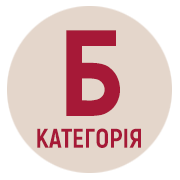CREATIVE EXPRESSIVENESS OF POSTMODERNIST ENGLISH NOVEL WITHIN CONCEPTUAL BLENDING THEORY
DOI:
https://doi.org/10.32782/2410-0927-2020-12-12Keywords:
conceptual blending, mental space, concept, conceptual metaphor, counterfactualAbstract
The article deals with the peculiarities of application of conceptual blending theory as well as conceptual metaphor theory to the analysis of the deep semantics of postmodernist English novel. Nowadays cognitive approach seems to be a prolific field of research into the intricacies of experimental texts. The perspectives of conceptual metaphor theory and conceptual blending theory are contrasted in terms of the ways of application, units of analysis, capabilities involved in the process of textual analysis and their heuristic potential. Whilst the former focuses on the search of generalizations across a wide range of metaphorical expressions, the latter – concentrates its efforts on the nature and specificity of individual examples, facilitating the classification of the general principles of such construction. Although postmodernist English narrative is predominantly structured by conventional conceptual metaphors, they enter a number of transformation processes like extension, compression, substitution, the usage of previously unused part of a conceptual metaphor in the course of realization of author’s intention. The article discusses the benefits of conceptual blending theory for the analysis of some idiosyncratic stylistic devices and narrative techniques. The meaning of the emergent mental spaces in the conceptual blends LIFE IS ANTICOMEDY, DOCTOR IS FIEND are subject to analysis, alongside with the conceptual blends created by a counterfactual “But say Thumberlina had married the mole?” and a compound noun BOMB BABY. The counterfactual being also an allusion to a wellknown fairy tale, the process of creation of new emergent space is being modelled and the possibilities of backward projection are being discussed. Therefore, it is possible to presume that conceptual blending theory has a potential to offer new insights into the nature of innovative complex textual concepts found in postmodernist English narrative and thus complement the capabilities of conceptual metaphor theory.
References
Amis, Martin. 1990. London Fields. London and New York: Penguin Books.
Amis, Martin. 1991. Time’s Arrow. London: Penguin Books.
Amis, Martin. 1996. The Information. Flamingo : HarperCollinsPublishers.
Amis, Martin. 2003. Yellow Dog. London: Jonathan Cape.
Amis, Martin. 2007. House of Meetings. London: Vintage Books.
Amis, Martin. 2010. The Pregnant Widow. Inside History. London: Jonathan Cape.
Babeliukh, Oksana. 2013. “Sposoby postmodernistskoho tekstotvorennya kriz pryzmu polistylistyky”. Odeskyi lingvistychnyi visnyk 1: 5−16.
Bekhta, Ivan. 2013. Avtorske eksperymentatorstvo u anhlomovniy prozi XX stolittia. Lviv: PAIS.
Bystrov, Yakiv. 2016. “Biohrafichnyi naratyv u linhvokohnityvnomu vymiri (na materiali anhlomovnoi prozy XX – pochatku XXI stolit)”. PhD diss., Kyiv.
Evans, Virginia. 2006. Cognitive Linguistics: An Introduction. Edinburgh: Edinburgh University Press.
Fauconnier, Gilles, and Mark Turner. 2003. The way we think: conceptual blending and the mind’s hidden complexities. Basic Books.
Izotova, Natalia. 2018. “Khudozhniy naratyv u konteksti ihrovoi stylistyky”. Aktualni pytannia humanitarnykh nauk 20: 63−67. doi.org/10.24919/2308-4863.1/20.167364
Lakoff, George. 2004. Zhenshchiny, ogon i drugie opasnyie veshchi: chto kategorii yazyka govoriat nam o myshlenii. Moskva: Yazyki slavianskoi kultury.
Moskvchova, Oksana. “Emerhentni kohnityvni struktury v poetychnomu teksti u svitli teorii kontseptualnoi intehratsii mentalnykh prostoriv”. Problemy humanitarnykh nauk. Ser.: Filolohiia 42: 107−118. doi.org/10.24919/2522-4557.2018.42.152342
Semino, Elena. 2006. “Blending and character’s mental functioning in V. Woolf’s ‘Lapin and Lapinova’”. Language and Literature 15(1): 55–72. doi: 10.1177/0963947006060555
Tsur, Reuven. 2008. Toward a Theory of Cognitive Poetics. Succex Academic Press.
Vorobyova, Olha. 2009. “Evrystyka modernistskoho metodu u kohnityvno-poetolohichnomu vysvitlenni”. Visnyk KNLU. Seriia Filolohia 1: 31−43.
Vorobyova, Olha. 2013. “Khudozhniy tekst: u poshukakh metametodu interpretatsii”. Anhlistyka ta amerykanistyka 10: 7−11.







